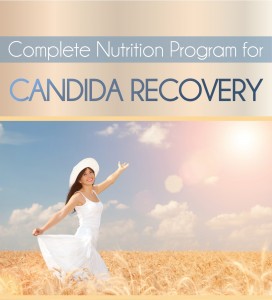Exercise is such an important piece of the puzzle in health and fitness, and unfortunately, there is about as much misinformation out there regarding exercise as there is about nutrition.
Exercise is considered either aerobic or anaerobic. Our aerobic systems use mostly fat for energy, whereas our anaerobic system relies primarily on sugar. The terms aerobic and anaerobic refer to the presence and absence of oxygen, respectively. Most of our cells prefer to get their energy by using oxygen to fuel metabolism. During exercise with adequate fuel and oxygen ( aerobic), muscle cells can contract repeatedly without fatigue. During anaerobic or non-oxygen conditions (higher intensity exercise), muscle cells must rely on other reactions that do not require oxygen to fuel muscle contraction. Anaerobic metabolism in the cells produces waste molecules that can impair muscle contractions. This is what we call fatigue.
Ultimately, your goal in fitness should be to develop excellent aerobic function as you can so that you enhance your body’s ability to burn fat, without accelerating the aging processes within the body, creating damage to the heart muscle, and reducing your immune system response.
However, certain types of exercise, as well as certain lifestyle factors, create damage to our bodies, making it harder to lose fat, while aging us at the same time.
THE MOST NEGATIVE IMPACT ON YOUR AEROBIC SYSTEM IS STRESS. STRESS OF ANY KIND PROGRAMS YOUR BODY TO BURN LESS FAT AND MORE SUGAR.
Over-exercising, such as extended periods of high intensity aerobic exercise, leads to stress in the body, and can lead to a condition known as “Aerobic Deficiency Syndrome” which can ultimately lead to serious consequences such as heart disease, cancer and diabetes.
The most common result of excessive high intensity cardio? Hypothyroidism. Yes, a body that no longer produces enough thyroid hormone. Eventually, metabolism slows to a snail’s pace. This is your body rebelling against what it perceives as an assault.
Here is an important fact: Steady-state endurance activities can devastate a woman’s metabolism. It can devastate a man’s too, but in different ways. Running, cycling, stair climbing or elliptical exercises done for prolonged periods (longer than 45 minutes at a time), at more than your maximum aerobic heart rate, can lead to heart damage, diminished thyroid activity and lack of fat metabolism.
Studies have proven that for women, chronic excessive cardio shuts down the production of the thyroid hormone, T3. T3 is the body’s main regulator of metabolism. When T3 levels are normal, the body burns enough energy to stay warm and muscles function at moderate efficiency. Too little T3 and the body accumulates body fat with ease, almost regardless of physical activity level.
Unfortunately, we can knowingly create hypothyroid conditions in the body by performing constant steady-state cardio.
Remember, our body’s main goal is to keep us alive. When we over-perform cardio, our body perceives excessive energy expenditure, it adjusts to compensate. From a biological perspective, this makes sense – it allows you to survive longer while enduring what is seen by the body as a very stressful activity. So, it decreases T3 production, increases efficiency and adjusts your metabolism to preserve energy.
Training at a consistent level above your maximum heart rate or above, adapts the body to conserve as much body fat as possible. So, after a while, fat cells stop releasing fat.
The other problem with excessive cardio is that it elevates cortisol levels triggering muscle loss, and also increases higher levels of myostatin, which also destroys muscle. Additionally, once muscle mass is on the decline, bone loss is not far behind.
So the result of excessive cardio above your maximum aerobic heart rate? Muscle loss, body fat conservation mechanisms and bone loss.
This is yet another factor in the rebound weight/fat gain. Often when people are able to sustain excessive cardio and low calorie dieting, they are looking good. Losing weight, seeing the numbers drop on the scale. Soon after the honeymoon phase wears off, and food intake begins to increase, and the burning of calories for hours at the gym starts to wane, the body is able to launch it’s full comeback – weight gain. But it’s not just weight now. Those 15 pounds you lost, a certain percentage of which was lean muscle tissue, is now coming back on as 20 pounds of fat. Your body is not going to “pack on” the muscle in the rebound phase.
So, over time, even if you end up at the same weight today that you were in high school, you will have drastically altered your overall body composition to where you will have a much higher fat percentage than muscle, which results in slow metabolism and a much harder time losing weight on the next turn.
The head of the preventative cardiology department at the Mid America Heart Institute, Dr. James O’Keefe summarized the results of multiple studies on the long-term health risks of excessive cardiovascular exercise. He stated that:
“Emerging data suggest that chronic training for and competing in extreme endurance events such as marathons, ultramarathons, ironman distance triathlons, and very long distance bicycle races, can cause transient acute volume overload of the atria and right ventricle, with transient reductions in right ventricular ejection fraction and elevations of cardiac biomarkers.”
So, even more important than the fact that pounding away at the cardio day in and day out is programming your body to burn nothing but calories and sugars instead of burning fat, is that fact that you are doing damage to your heart over time.
According to a study presented at the Canadian Cardiovascular Congress 2010 in Montreal, regular exercise reduces cardiovascular risk by a factor of two or three. But extended exercise like distance running raises cardiac risk by 70%! Long-distance running also leads to high levels of inflammation that can trigger cardiac eventsi and damage your heart, for a long time to come after the marathon is over.
Women between the ages of 30 to 70 who perform extended cardio require excessive oxygen consumption, accelerating the aging process. After prolonged heavy exercise, lipid peroxidation that damages cells, rapidly increases. Excessive exercise also causes superoxide dismutase (SOD) deactivation — SOD is an enzyme protecting cells against aging. Many studies have concluded that extensive cardio causes an increase in the production of free radicals which then cause cellular damage.
So here are some tips on how you can improve your body’s fat burning capabilities, and slow, rather than accelerate, the body’s aging process.
Final Tips on Cardio
- Consider doing short cardio twice a day, instead of one longer duration cardio, at your maximum rate as determined by the 180 formula.
- Never exercise longer than 45 minutes at a time, preferably 30 minutes. Longer than 45 minutes and you will be increasing cortisol levels and not gaining any increase in fat loss benefits.
- Perform 2-3 high intensity interval workouts per week for 15-20 minutes
- Taking deeper breaths during exercise (and throughout the day) provides additional fat burning
- If you are going to do weight training (which I recommend), do the weight training first and use that as your warm-up for your cardio on 3 days per week.
- ALWAYS use a heart monitor to see what level of intensity you are working at
- Remember, it is most important to avoid eating junk food that you will feel you need to try and “burn off” later on at the gym.
- For maximum fat burn, perform your morning cardio on an empty stomach and you will be burning almost ALL FAT, and will be sparing your muscle tissue.











